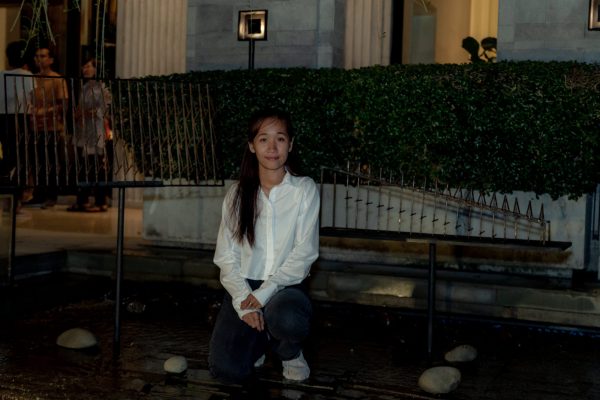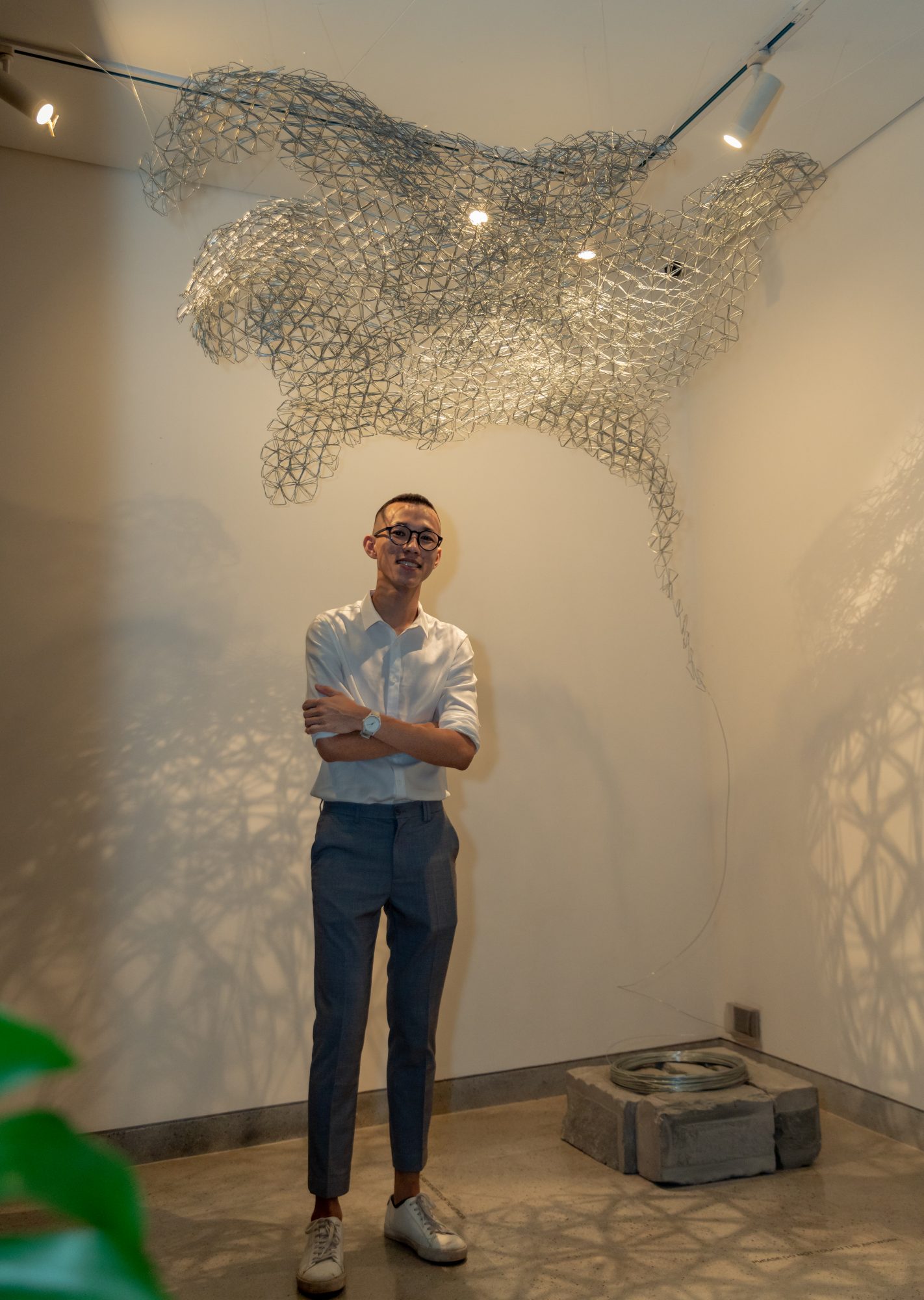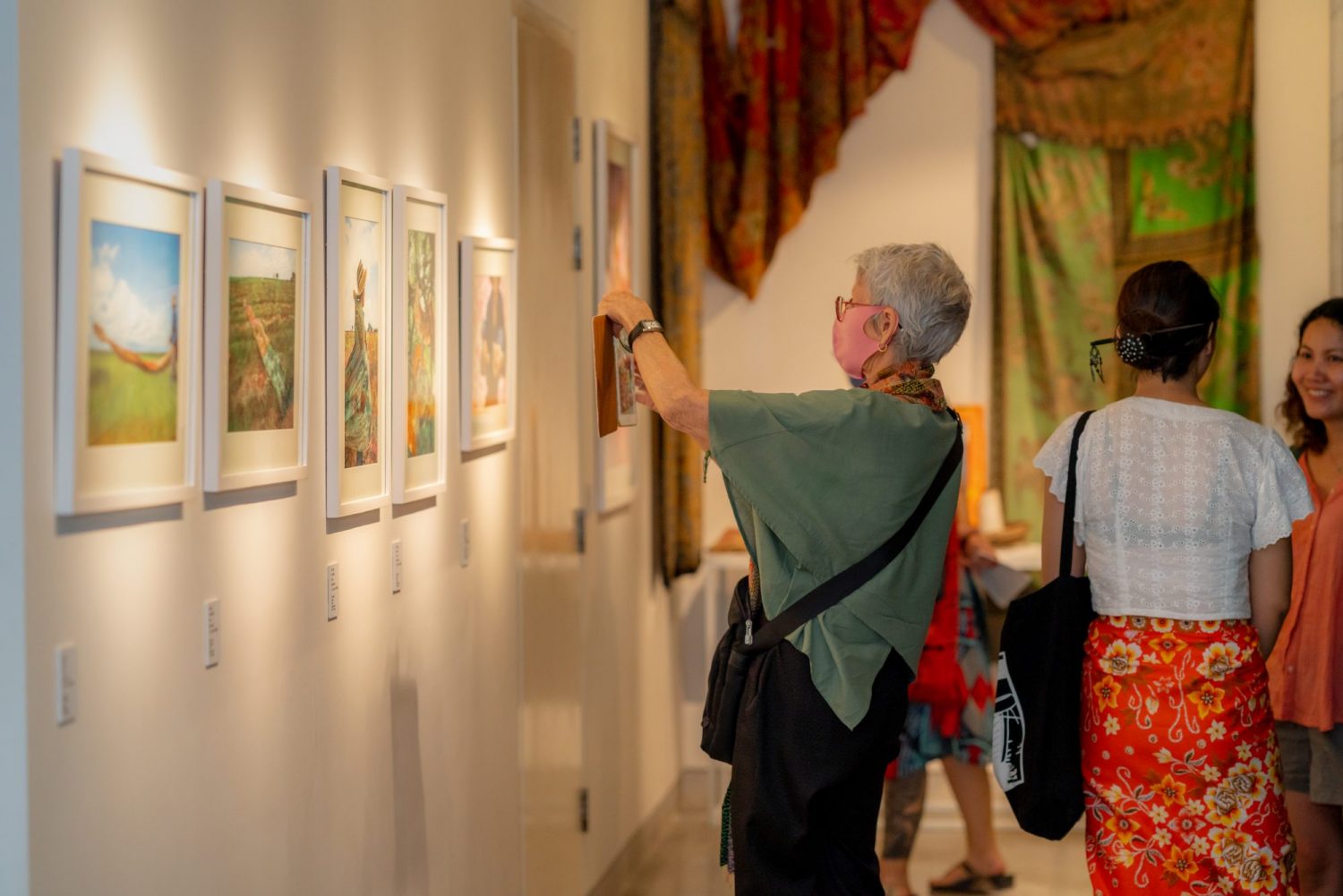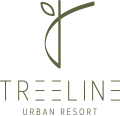Current exhibition
INVISIBLE VOICES: Treeline Artist Grants 2020
A group exhibition by Kong Siden, Hul Kanha, Prak Dalin, Prum Ero, So Vitou, and Tyl Kan
November 21 2020 – February 28 2021
After rigorous selection of proposals and 10 months of concept development, research, experimentation and production of projects, Treeline Gallery is honored to present the Treeline Artist Grants 2020 group exhibition. Six talented emerging local artists, including Kong Siden, Hul Kanha, Prak Dalin, Prum Ero, So Vitou and Tyl Kan, were selected and given the platform to produce original artworks and present a collective exhibition. The featured artworks employ paintings, photography, sculptures and installations. They do not draw upon the same topic, but rather each artist presents individual ideas, ways of thinking, seeing, and exploring. Through their creations, the artists send us personal messages almost as if they were building an “Invisible Voice”.
As a documentarian, Ero Prum works with photography and videography. His interest in nature and architecture inspires his exploration of the intricate relationship between the natural environment and architectural landscapes in his works. Ero became captivated by the environment underwater when he began scuba diving in 2019. He perceives coral reefs as beautiful forms of architecture, though in this case, they are built by nature. Coral reefs are complex architectural landscapes in an ecosystem where creatures and shelters co-depend. They resemble clusters of communities with different groups of species living in each coral community. His artistic research and artwork deals with site-specific nature and urban settings. He mindfully experiments with artistic light intervention and these coral reef “architectural landscapes”. Ero uses lines of light around and across the coral reefs to illuminate an urgent call for public consciousness around these wondrous natural architectures and as an artistic representation of a protective boundary. He draws the audiences’ attention to these beautiful, natural “architecture” that are endangered due to human-made pollution and environmental degradation. Ero captured this series of photographs in Koh Kong, the southern part of Cambodia.
Aligned with the evolving of life, Prak Dalin’s work highlights her interest in transforming construction material to create sculptures and site-specific installations that appear as architectural structures to portray the impact of urban development. Her two sculptures and site-specific installation are inspired by the roof of traditional Khmer houses, and are sculpted from memory to reconstruct and position these architectural works differently from the original structures. The two sculptures are displayed inside the gallery space, and the site-specific installation is outside the gallery along the riverbank in front of Treeline Urban Resort to reflect traditional Khmer wooden houses along the river. The sculptures and installation sit at the intersection of two eras in Cambodia – underdeveloped and developing.
Hailing from a family in Siem Reap, and growing up surrounded by temples and greenery, So Vitou has been fascinated by architecture and nature since childhood. Vitou presents two installations and one drawing for Invisible Voice, surfacing the underlying elements of the connections between time, space and nature. City I is an abstraction of the Angkorian temple towers, conjuring the harmonious coexistence between nature and temple. The installation is made from one continuous metal wire, shaped to resemble growing vine plants. He responds to this with City II, a drawing which reflects the above towers, making them appear upside down to represent the collapse of the city. Moss, Vitou’s second installation, likewise begins with one continuous metal wire into an organic structure which audiences can walk through. A play on light and shadows casted on the audience’s skin while standing under the installation is reminiscent of moss growing on the temples, inviting viewers to contemplate their bodies and environment in states of change, transformation, harmony, decay, and destruction.
Kahna Hul is inspired by a well-known proverb, which reads “Women have 100 hands”. Kahna is reminded of her mother and other women, who “As women, we must engage in endless multi-tasking in our roles as wives, mothers, housekeepers, cleaners, cooks, and our various other roles.” Through this proverb, she creates “100 Hands” with her community in Kralanh District, Siem Reap where she grew up. Kanha held workshops with friends and the local women, and during these workshops, she became inspired by their stories. She captured her inspiration in photos featuring the female villagers’ hands sewing together a sarong, the landscape of sarong with the villagers in the ricefield, and the vibrant sarongs engulfed by trees. “100 Hands” presents part of Kahna collaborative project with the community and her family. She pays honor to the voices and stories that villagers shared with her, and photographed the moments to document what she heard as visuals. At the same time, she brings attention to this proverb, “Women have 100 hands”, through her artwork. Her six selected photographs combine mixed media elements to printed photographs, including paper-cuts, paint, and ink. In this exhibition, she presents six mixed media works and the sarong that villagers sewed together as an installation.
Surroundings change, humans evolve and memories blur as time passes. Technologies have outgrown and taken over the modern age. The next generation of Cambodia, now more than ever have suffered a lot in both personal and cultural identity. In acting out these identity concerns, Tyl Kan creates three large paintings using canvas. Her medium is oil/acrylic, which she uses to narrate and represent the sense of loss of identity in the transition of time and environment. She also contemplates this issue in a short film. “Self-identity” as a person, a citizen and part of a new generation can be confusing when time forces us to constantly move forward. The past is being forgotten as previous generations perish into history. She hopes this series will be a reminder for her generation to start making positive waves or movements by showing where they are standing right now.
Meanwhile, Siden’s work shows us his interest in sacrifice. He explores this in various forms of sacrifice: war sacrifice, religious sacrifice, self-sacrifice, animal sacrifice, and the sacrifice of nature. Siden began his artistic research by experimenting with multiple mediums and decided to use metal and paints as his primary mediums for this work. In the idea to create the series "Sacrifice," he creates a symbol made of square, flat metal cuts covered in red to pray and remind us of the lives of those who have suffered and the sacrifices they made when they were alive.
As a collective exhibition, the six artists’ works shine light on nature, the landscape of change, humanity and society. These are courageous choices, and Treeline Gallery is humbled to stand behind the talented artists and their work. Treeline Artist Grants 2020 Exhibition aims to not only provide the space at Treeline Gallery for exhibition, but also to serve as a platform for artists to develop their research, work, and practice. We hope to bring new possibilities for the art community in Siem Reap and across Cambodia through this year’s exhibition at Treeline Gallery, and to enable the artists we collaborate with to reach the next level in their artistic journeys. Treeline Artist Grants are supported by ISI GROUP.

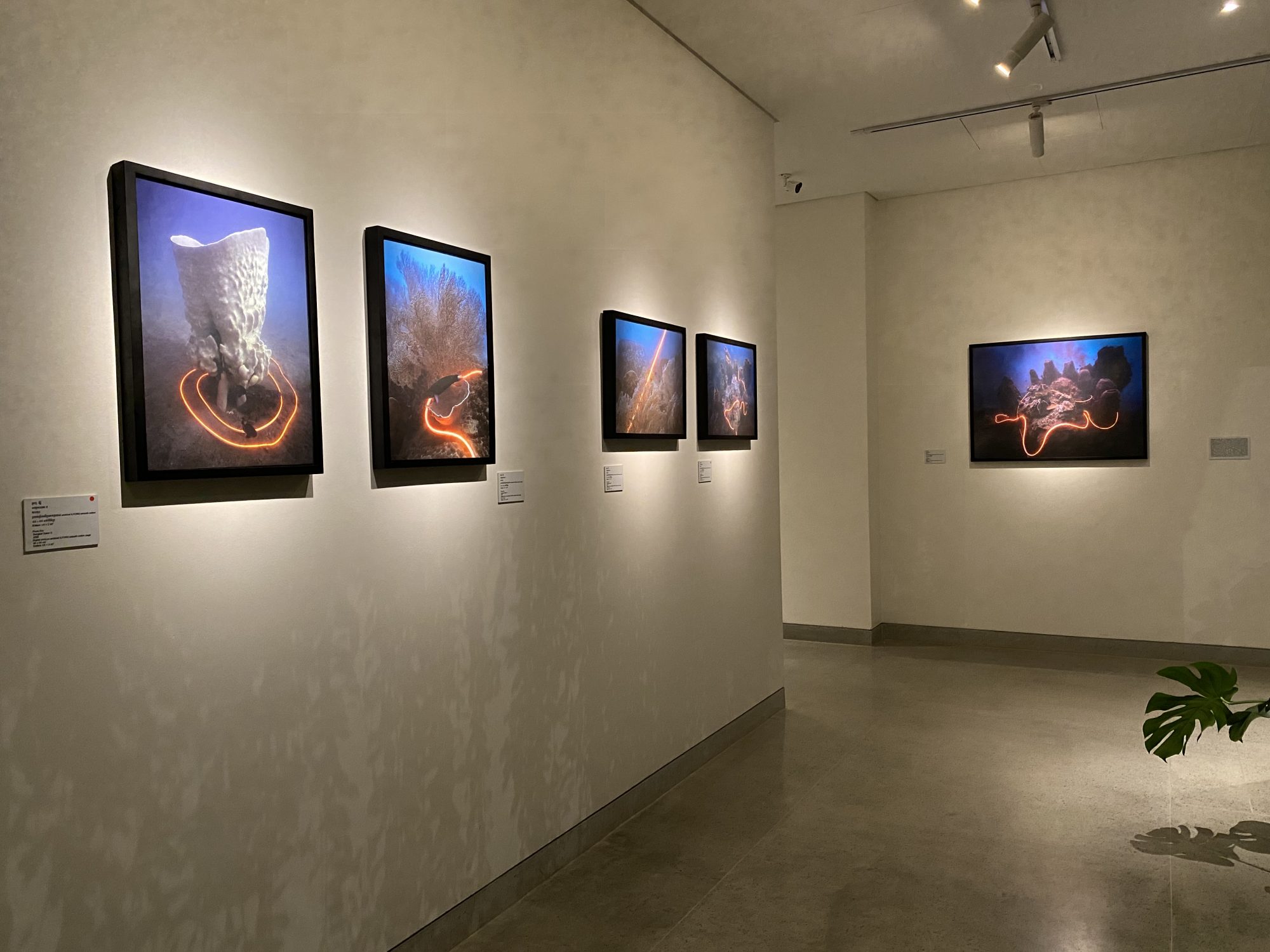


"Treeline Artist Grants 2020 Exhibition aims to not only provide the space at Treeline Gallery for exhibition, but also to serve as a platform for artists to develop their research, work, and practice. We hope to bring new possibilities for the art community in Siem Reap and across Cambodia."
